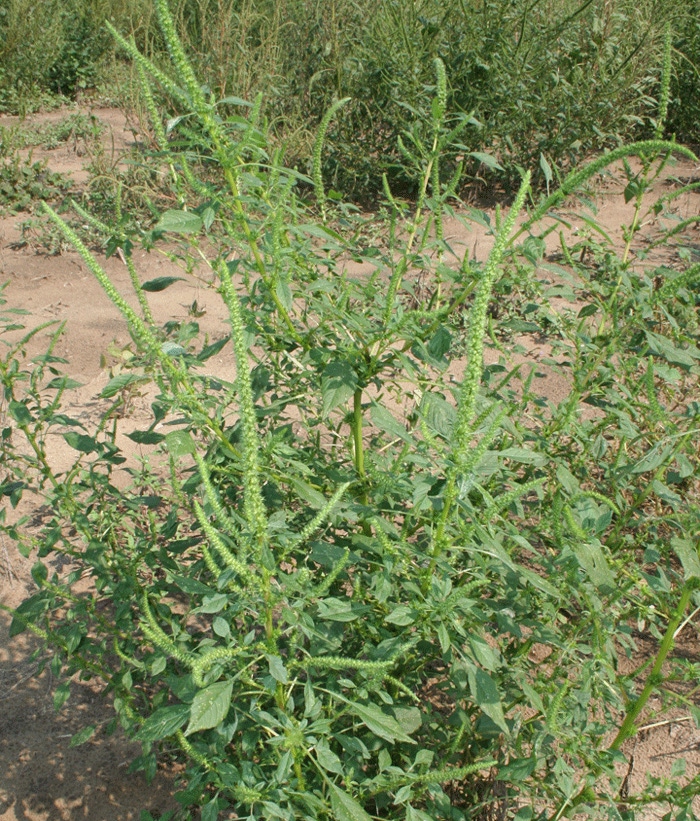January 13, 2012

The most dangerous words a cotton farmer will ever say are, “I thought I could get by one more year,” says long-time University of Arkansas Weed Scientist Ken Smith.
Speaking at a recent Monsanto-sponsored New Product Evaluator Summit in Charleston, S.C., Smith was describing the problems farmers throughout the Mid-South and Southeast have had and continue to have in managing glyphosate resistant pigweed.
Smith says when dealing with pigweed, resistant or not, don’t let inconspicuous get confused with harmless. Inconspicuous and harmless don’t go together in describing pigweed, he says.
Pigweed can sit in the ground 10-14 days, and they are small and they are inconspicuous, unless you are looking for them. But these fast growing weeds have a head start on cotton, and if the farmer doesn’t manage these inconspicuous weeds before they are 9-10 inches tall, he or she is likely to have a big problem, Smith says.
The three keys to managing pigweed are: Start clean, overlap residual herbicides, and manage escapes. Those simple steps seem easy enough sitting here in December, Smith chides, but when things get hectic at planting time, those three easy steps get harder and harder to take.
Must reduce seed numbers
To manage pigweed, Smith says, the seed bank must be stable or decreasing every planting season to achieve sustainability. He showed the 200 or so cotton farmers in the audience a picture of a female pigweed plant he calls Elvira. “In the lab, we counted 1.8 million seed from this one plant, which looked more like a tree and could shut down any cotton picker foolish enough to take it on,” he says.
Controlling pigweed is a numbers game that farmers simply cannot win, the Arkansas weed scientist adds. Elvira is a bit atypical of female pigweed plants, but the more typical plants consistently produce 200,000-300,000 seed if left untreated.
If 95 percent of the seed die during the winter months and the farmer gets 99 percent control from his herbicide program, he still has more than 3,000 pigweed plants. If half are female, the farmer has the potential of having another half million or so pigweed to deal with the next year. “It’s truly a numbers game that farmers won’t win,” Smith says.
If there is a good side of pigweed management it is that these weed seeds don’t last long in the soil. Usually four years is about the life span of Palmer amaranth pigweed in the soil. By comparison, cocklebur survives in the soil 25 years or more.
This short life cycle gives growers some options for keeping the seed bank under control. Keeping a field clean over a relatively short period of time gives growers a chance to get ahead of the numbers game and at least have a chance to control these yield-robbing weeds.
During the NPE program, farmers Bowen Flowers from Clarksdale, Miss.. and Kent Wannamaker from St. Matthews, S.C., shared some of their experiences in dealing with pigweed.
The ante goes up considerably on pigweed when you get weeds that are tolerant to glyphosate, Flowers says. “It’s one of those deals where you can pay me now or you can pay me a lot more later. Unfortunately, our farming operation fit into the pay me a lot more later category,” the Mississippi grower adds.
“In 2009, we cleaned up some land that had some resistant pigweed on it. We thought we did a good job and it didn’t look like much of a problem. In 2010, I sprayed my burn-down treatment and planted without any residual herbicide.
“We got a good rain, and up came the pigweed. We sprayed with glyphosate and killed at least 80 percent of the new flush of weeds. Once the 20 percent left over got over six inches tall, we had a big mess on our hands.
“We had 100 acres of cotton that we ended up disking up because we just couldn’t control pigweed. On the rest of our land, it cost a lot of money — a lot of ‘pay me later’ — to grow cotton on much of land,” Flowers says.
In 2011, the Mississippi grower says he took the ‘pay me now’ approach. “In February, we burned down with glyphosate and 2,4-D. Three weeks before planting we applied Reflex and at planting we applied Gramoxone and Cotoran behind the planter.
Not a cheap option
“On about 10,000 acres of cotton, we kept an overlap of residual herbicides and used different families of herbicides. It’s not cheap to overlap these herbicides, but it cleaned up most of our land.
“We still had a few fields with pigweed and we used hot-spot treatments to try and get to zero tolerance on pigweed. On the escapes we did have, we used hand labor to remove those weeds from our fields.
“We didn’t quite make it to zero tolerance, but it was a big improvement and it showed up in our cotton quality and yield. It takes a lot of work and it’s not cheap, but you can control pigweed. And, controlling them is a lot cheaper than losing the numbers game to pigweed,” Flowers says.
Wannamaker says he has made pigweed a top priority since he first began growing cotton. “My son told me, “Daddy I can’t believe you’d walk a half mile across a cotton field to pull up one weed.” “I knew when Roundup Ready cotton came to the farm there would be more cotton acres, because we could control pigweed, he adds.
The South Carolina grower says he applies glyphosate in February or March to burn down pigweed that survived the winter. He comes back right before planting with Gramoxone for a second burn-down.
“It’s real important to get the Gramoxone down close to planting, because we are susceptible to having rain at that time of the year and Gramoxone, rain and pigweed just don’t go well together, Wannamaker says.
He applies Reflex right behind the planter. Then, he comes back with a hooded application of Gramoxone and Valor — not on all his acreage.
“We have what I call families of pigweed that survive from one year to the next. So, in June I hire a crew to come in and clean up these areas. If we miss it with chemicals, we turn to hand labor — it’s costly, but it’s the only way we’ve been successful in managing pigweed,” the South Carolina grower adds.
“I think you have to have the attitude that I don’t want one pigweed in my cotton. We make it as hard as possible for a pigweed to grow to be an adult — it’s a numbers game we don’t want to play,” Wannamaker says.
Smith, who has preached the evils of Palmer pigweed across the Cotton Belt for the past few years, says taking a zero tolerance to these weeds is important. “I had one grower tell me, my grandfather farmed this land and my grandchildren will likely farm it, and I’m not going to let pigweed prevent that from happening.”
“That’s the kind of attitude a farmer had better have, if he is planning on managing pigweed in an environment in which more and more weeds are tolerant of the No. 1 herbicide used to kill them,” the Arkansas weed scientist says.
Smith asked the 200 or so cotton farmers to raise their hand, if they are growing less cotton than they were 10 years ago. Acknowledging that no one raised a hand, Smith says, “Like it or don’t, farmers are planting more acres, and they can’t go back to the size operation they had before we had glyphosate tolerant cotton plants,” Smith says.
About the Author(s)
You May Also Like






